Campanula varieties: 15 top choices for beautiful bell-shaped blooms
These are our favorite campanula varieties for contemporary to cottage-garden schemes and everything in between

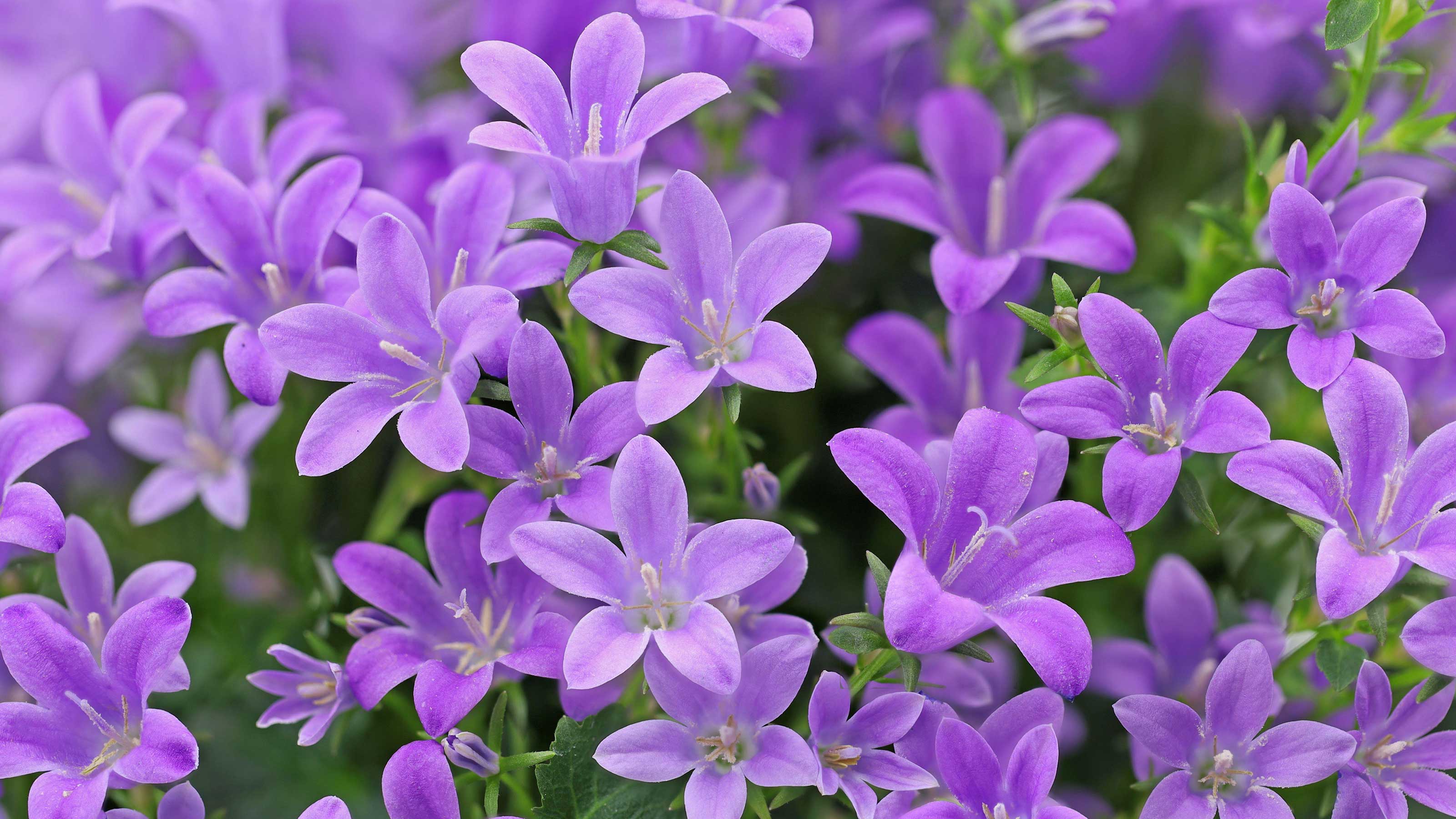
Romantic and a little wild and unruly, campanula varieties come in many forms. You might also know them as Canterbury bells, harebells, bellflowers, fairies’ thimbles, and other old-fashioned country-style names.
From annuals and biennials to perennials, with semi-evergreen types in between, their delightful bell-shaped flowers range in colors from white through pink to violet and deepest purple, often blooming continuously right through the summer months.
Perhaps it's the simplicity of campanulas that makes them sometimes overlooked as flower bed ideas. At opposite ends of the scale, there is the campanula we probably take most for granted, Campanula poscharskyana, that will happily scramble over old walls and can be left entirely to its own devices. Meanwhile, its taller, more classical relative Campanula persicifolia, or peach-leaved campanula, has perfect violet or white bell-shaped blooms, a slightly lax habit, and will find a home in dappled shade and happily self-seed. But in between these two, there are hundreds of fantastically glamorous species and hybrids, with taller, sturdier stems, and variations of longer, fluted bell-shaped flowers, doubles, or starry, more open types.
Campanulas are quite unfussy plants. The most you might have to do is some cutting back after flowering to prevent self-seeding or to promote a second flush of flowers later in the season. Some can be a little keen to spread – via seed or rhizomes – but they are largely well behaved and don't need cosseting beyond a little bit of support. And, they are not troublesome in terms of pests and diseases. With the added advantage of being pollinator-friendly, why not lead the way and find some stunning types of campanula to grace your garden?
Brighten up your borders with these 15 stunning campanula varieties
If you're abiding by the ‘right plant, right place’ principle – which is, after all, the most sensible approach to choosing new plants – do think about campanulas.
There are campanulas for the driest of spots – like an old wall or path – and others that will grace borders and planters in sun to semi-shade. And they are not fussy about soil types, apart from the most acidic.
And as there's a range of hues to choose from, you can complement or enhance your garden color scheme with these blooms. You will almost certainly find one to suit your plot, whether you're creating a cottage-style haven or a contemporary container display.
1. Campanula glomerata 'Superba'
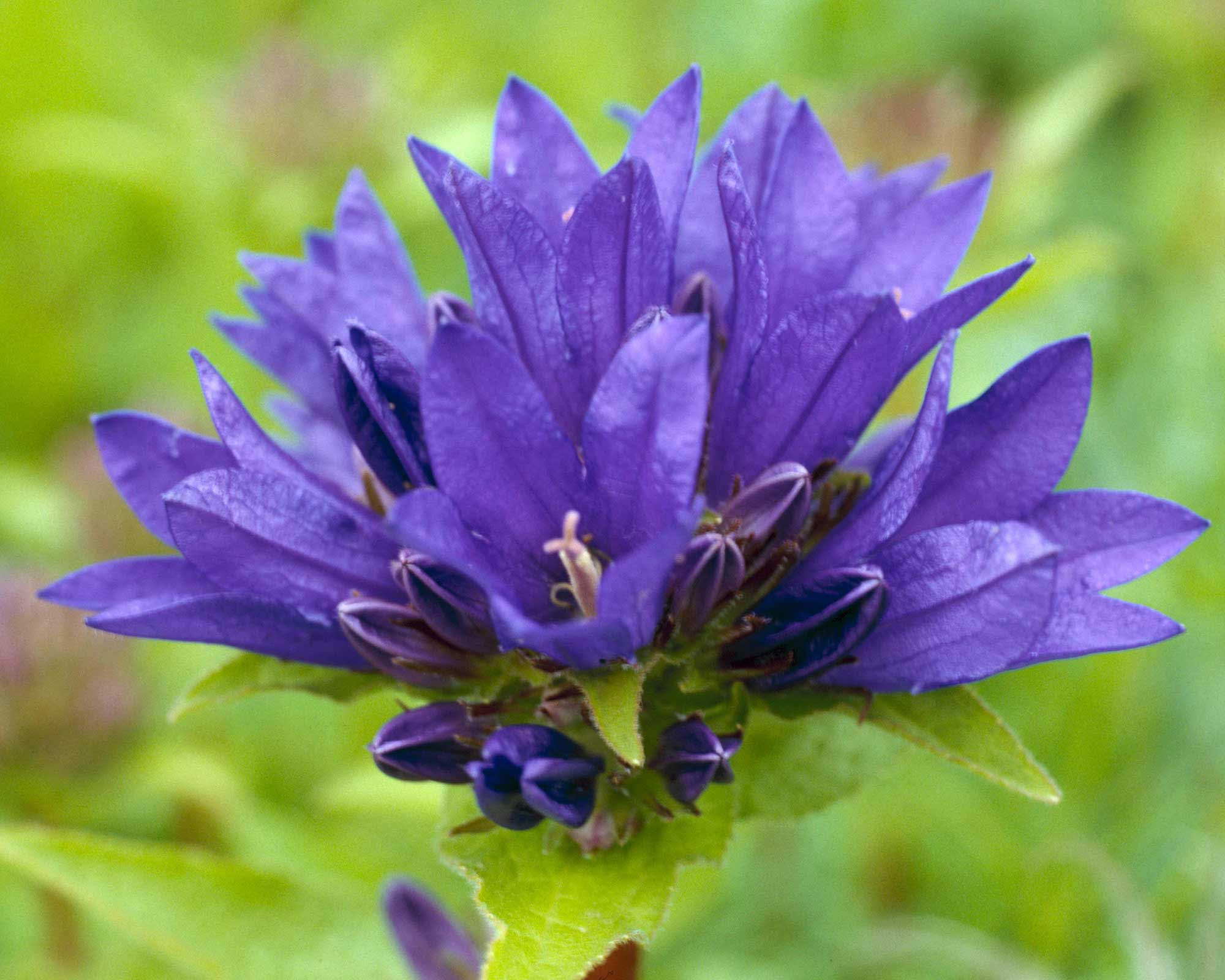
- Hardiness: USDA 3–8 (UK H4)
- Height: 36in (90cm)
- Spread: 36in (90cm)
- Best for: loose, romantic displays
With deep purple flowers held in clusters atop tall stems, this is a stunning border plant to take displays from early spring right through the summer.
Great for loose, wildflower planting schemes or semi-woodland areas, it will also complement classic cottage garden perennials. Spreading via rhizomes, the carpet of foliage makes good ground cover too.
Plant in well-drained, moist soil in a sunny spot. It's so well-behaved it has been awarded an RHS AGM.
2. Campanula 'Pink Octopus'
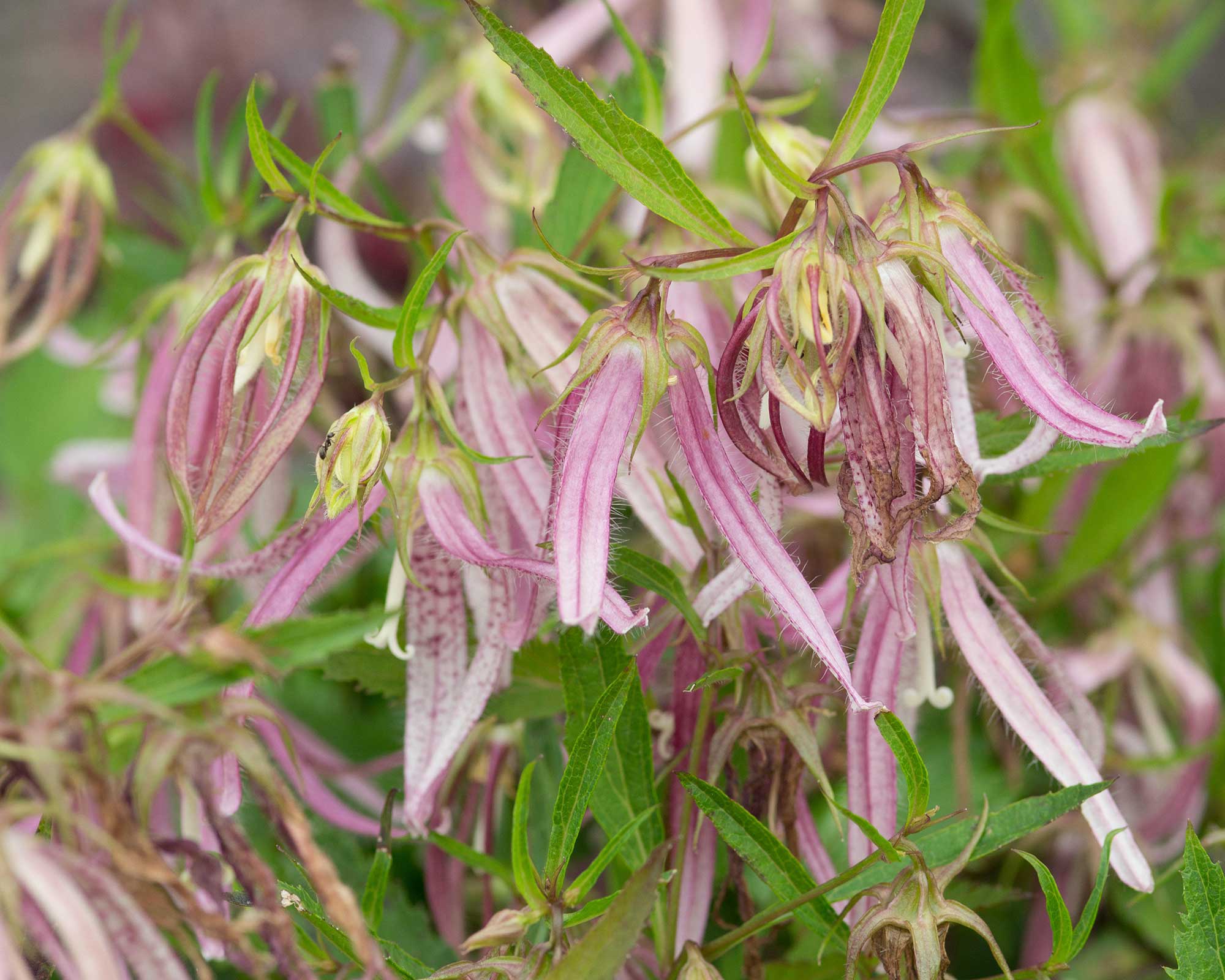
- Hardiness: USDA 5–9 (UK H4)
- Height: 15in (38cm)
- Spread: 18in (45cm)
- Best for: welcoming pollinators
This is a very unusual, unique campanula with fine, delicate, and open pale-pink petals on the nodding flowers, almost as if the bellflower has been gently torn apart.
Foliage is semi-evergreen, and the flowers appear from early to midsummer. Despite their delicate looks, these are quite vigorous plants and suit sunny locations right at the front of a border.
It makes a wonderful addition if you're on the lookout for plants for pollinators. Grow it alongside achilleas and verbenas to encourage bees and butterflies to your plot.
3. Campanula carpatica
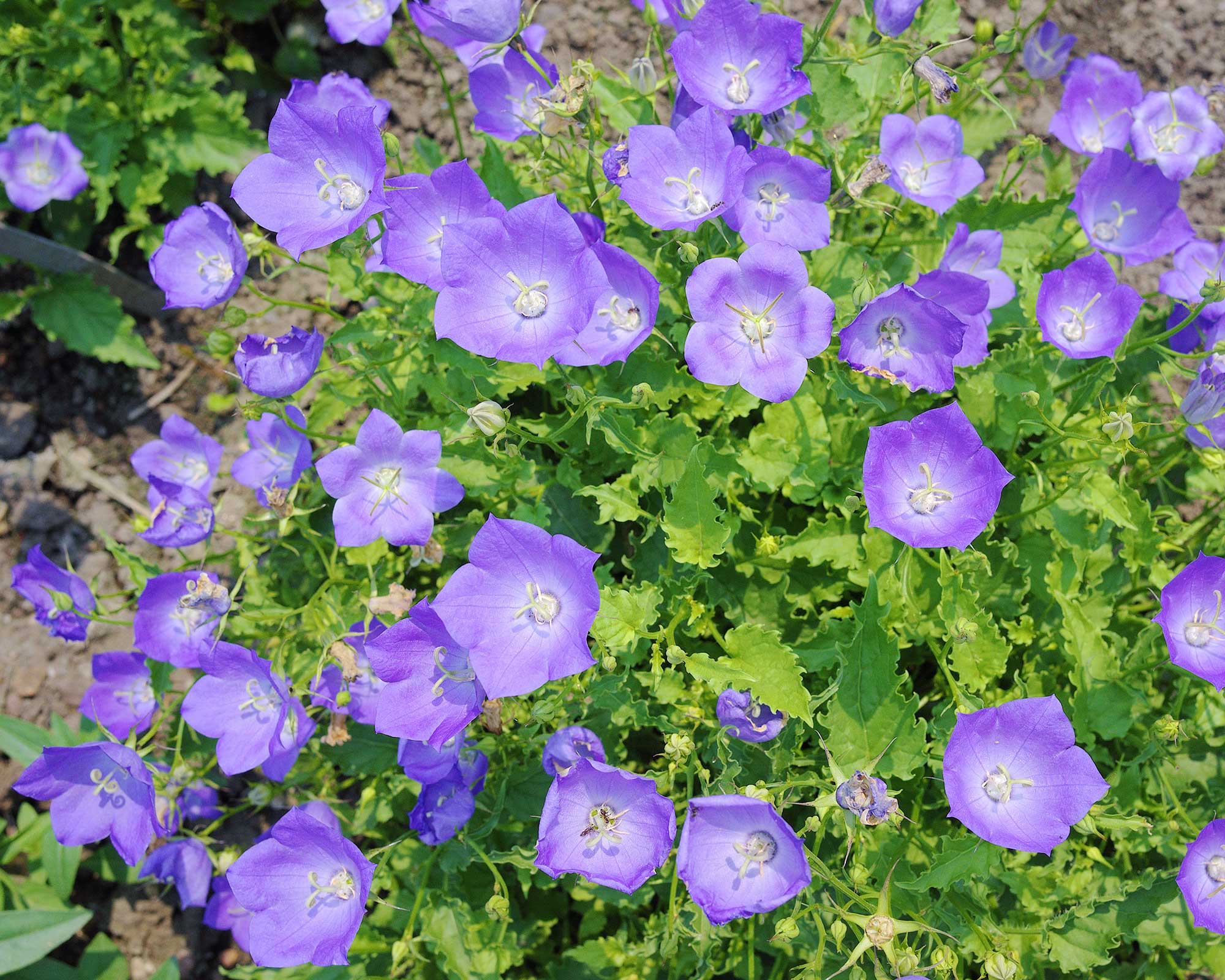
- Hardiness: USDA 4–9 (UK H4)
- Height: 10in (25cm)
- Spread: 18in (45cm)
- Best for: ground cover
Native to Siberia and Japan, this spreading species has large, deep purple-blue flowers appearing above a neat, mounded clump of semi-evergreen foliage.
A reliable performer in a dry, well-drained, and sunny spot, it will flower from mid-summer until early fall. Great as a decorative ground cover plant at the front of a border, it will nestle happily next to the equally tough Erigeron karvinskianus.
4. Campanula 'Viking'
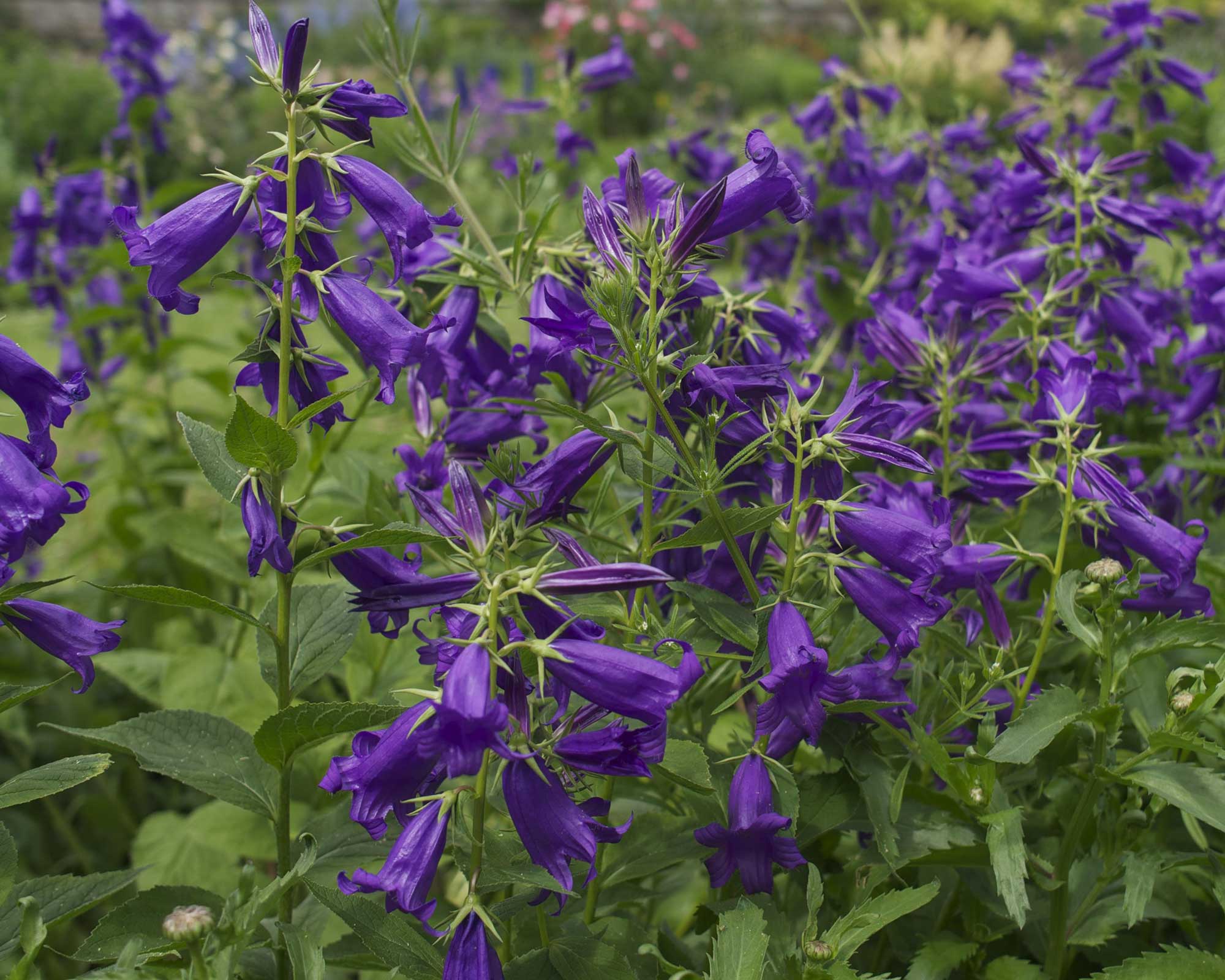
- Hardiness: USDA 4–9 (UK H4)
- Height: 18in (45cm)
- Spread: 24in (60cm)
- Best for: container growing
A newer hybrid, 'Viking' is compact and not an enthusiastic spreader. But, it's a good height for planting in drifts through borders and also for using in container displays.
Valued for its capacity to produce loads of purple flowers on upright stems, it will flower in early summer, but you can encourage a later second flush by cutting back the first spent blooms.
The fact that it's a good pick for both sun or part shade and tolerant of most soil types makes this ideal for low maintenance garden borders.
5. Campanula lactiflora 'Loddon Anna'
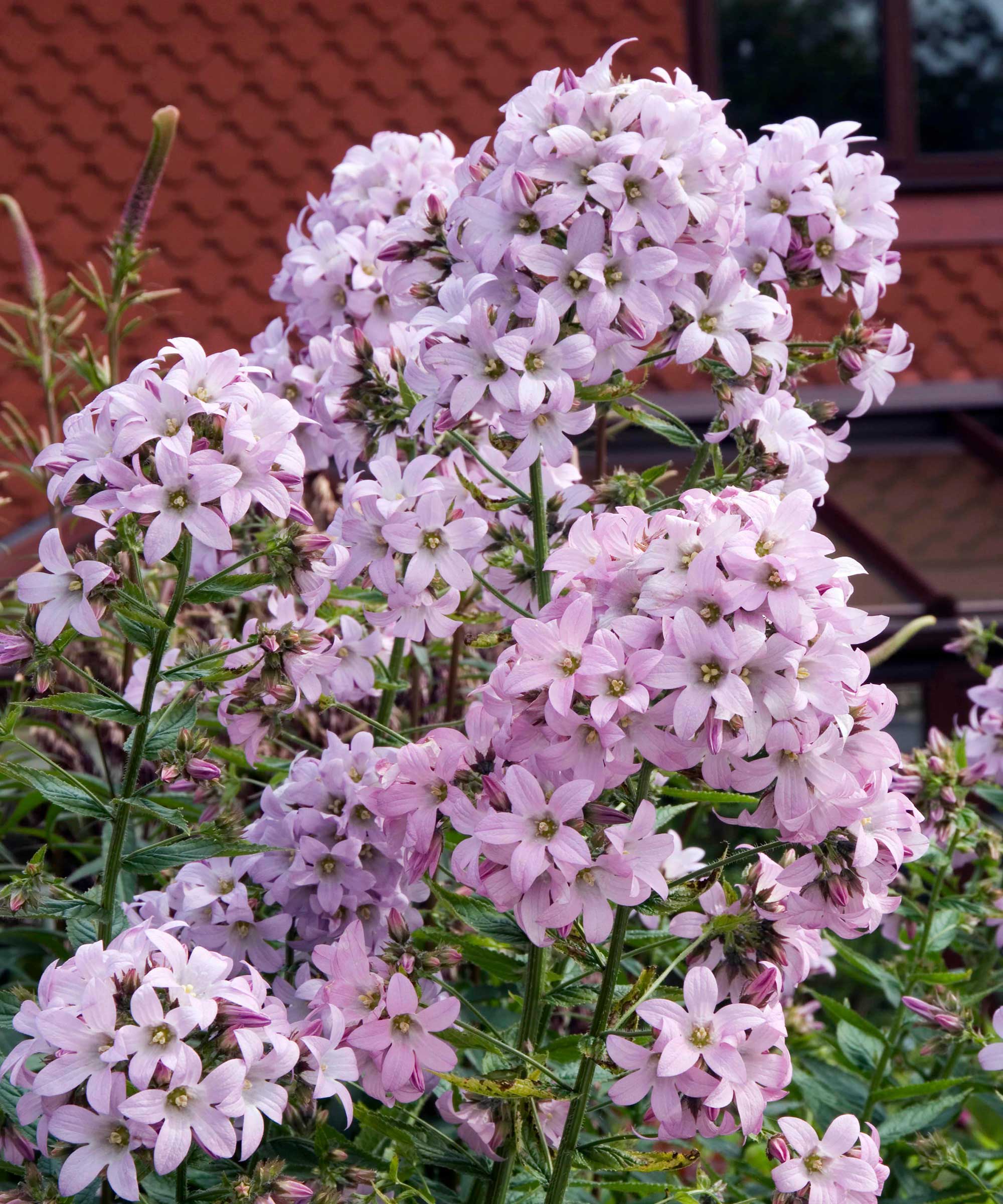
- Hardiness: USDA 5–9 (UK H4)
- Height: 48in (120cm)
- Spread: 36in (90cm)
- Best for: architectural structure
This type of campanula is also known as the milky bellflower for its clusters of palest lavender-pink flowers that are more open and starry than classically bell-shaped.
A tall variety, it can benefit from some support in more open areas. Or, plant in borders among other similar upright plants to provide natural structure – for example, lupins or delphiniums.
It's good for sunnier areas with moist but fertile soil. Cut back after flowering if you’d rather it didn't self-seed and to encourage a second flush of flowers later in the summer. It can be propagated by division.
6. Campanula poscharskyana
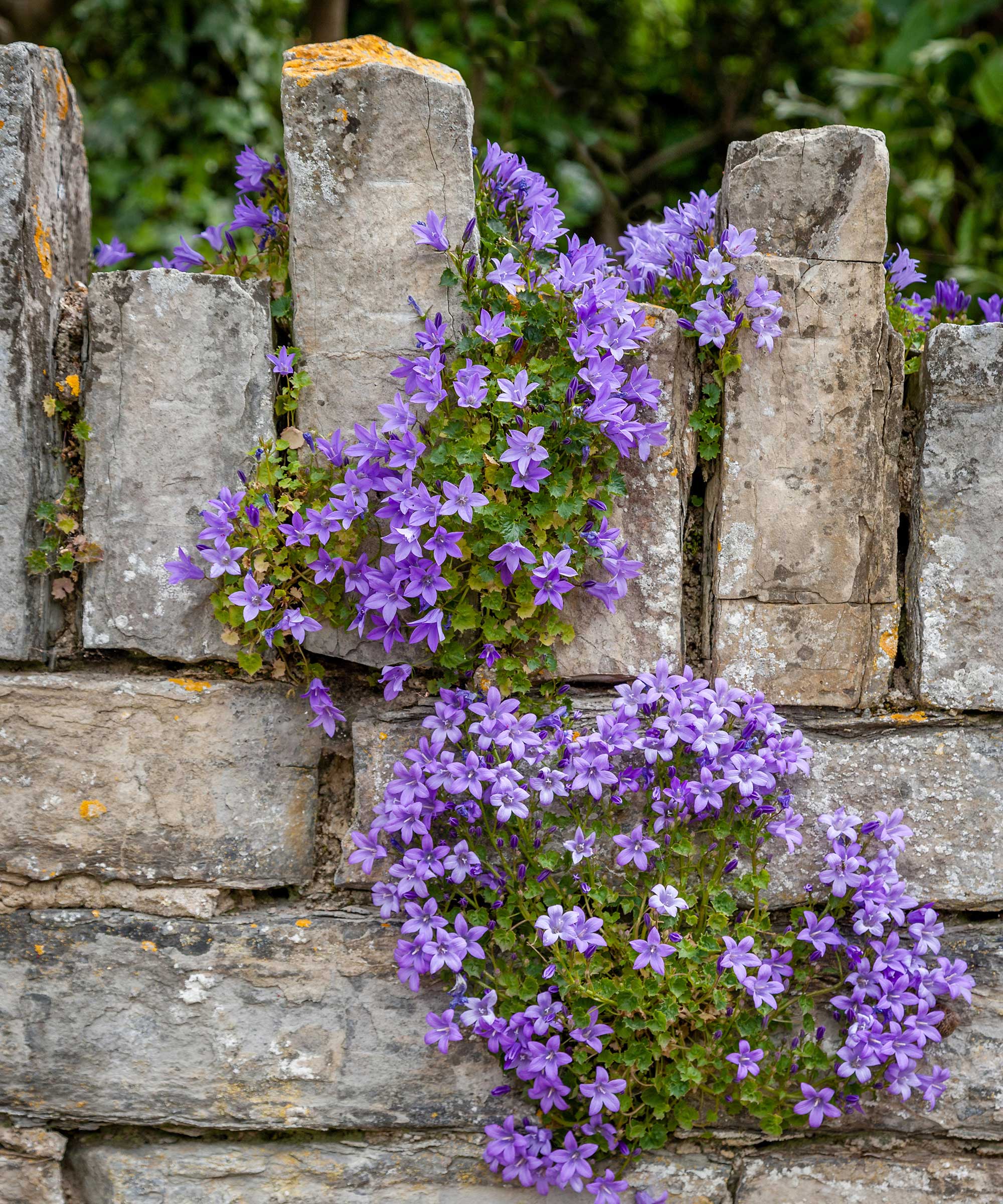
- Hardiness: USDA 3–9 (UK H4)
- Height: 6in (15cm)
- Spread: 24in (60cm)
- Best for: sunny walls, banks, or path edges
Campanula poscharskyana is a very keen and effective ground cover campanula, originating in the Dalmatian peninsula.
A favorite of Sarah Raven, who uses it to fill gaps in walls, it has good drought tolerance. It also works well in pots, on steep banks, and as garden path edging and thrives in full sun and sharply drained soil.
The lavender-blue flowers start appearing in early summer and are starry and open to the sun, rather than classically bell-shaped. They appear on a mat of semi-evergreen foliage and the plant has a slightly trailing habit as it spreads.
7. Campanula persicifolia 'Alba'
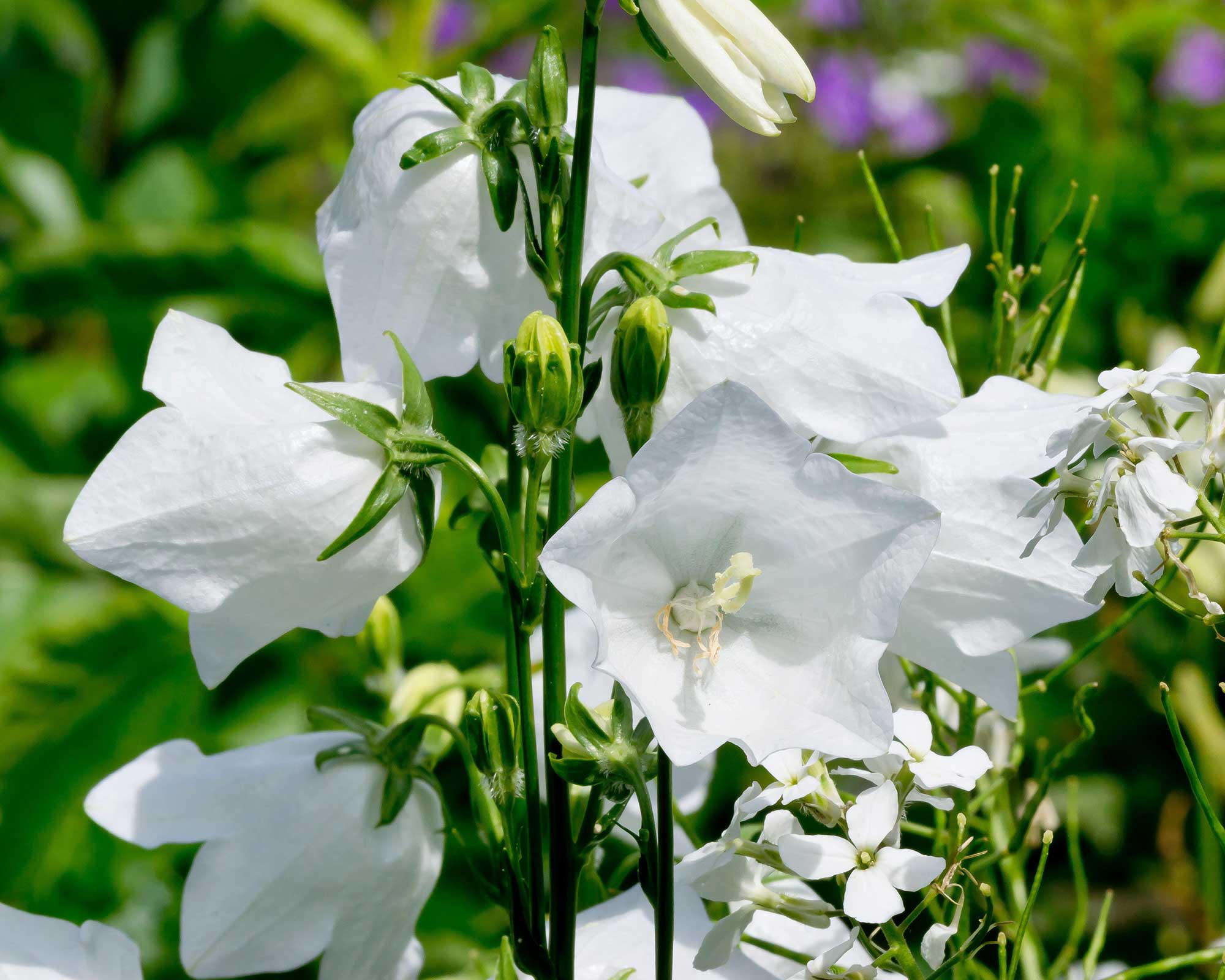
- Hardiness: USDA 3–8 (UK H4)
- Height: 36in (90cm)
- Spread: 18in (45cm)
- Best for: white flowers
'Alba' is a classic 'peach-leaved' bellflower, with the purest, single white blooms. The stems are relatively sturdy and it will spread via rhizomes to form large clumps in semi-shade and sunnier borders.
Team with alliums, peonies, and verbascum varieties for a romantic early-to-mid-summer display. It also makes a good choice for larger containers.
Plant in moist but well-drained soil and do not let it dry out.
8. Campanula portenschlagiana
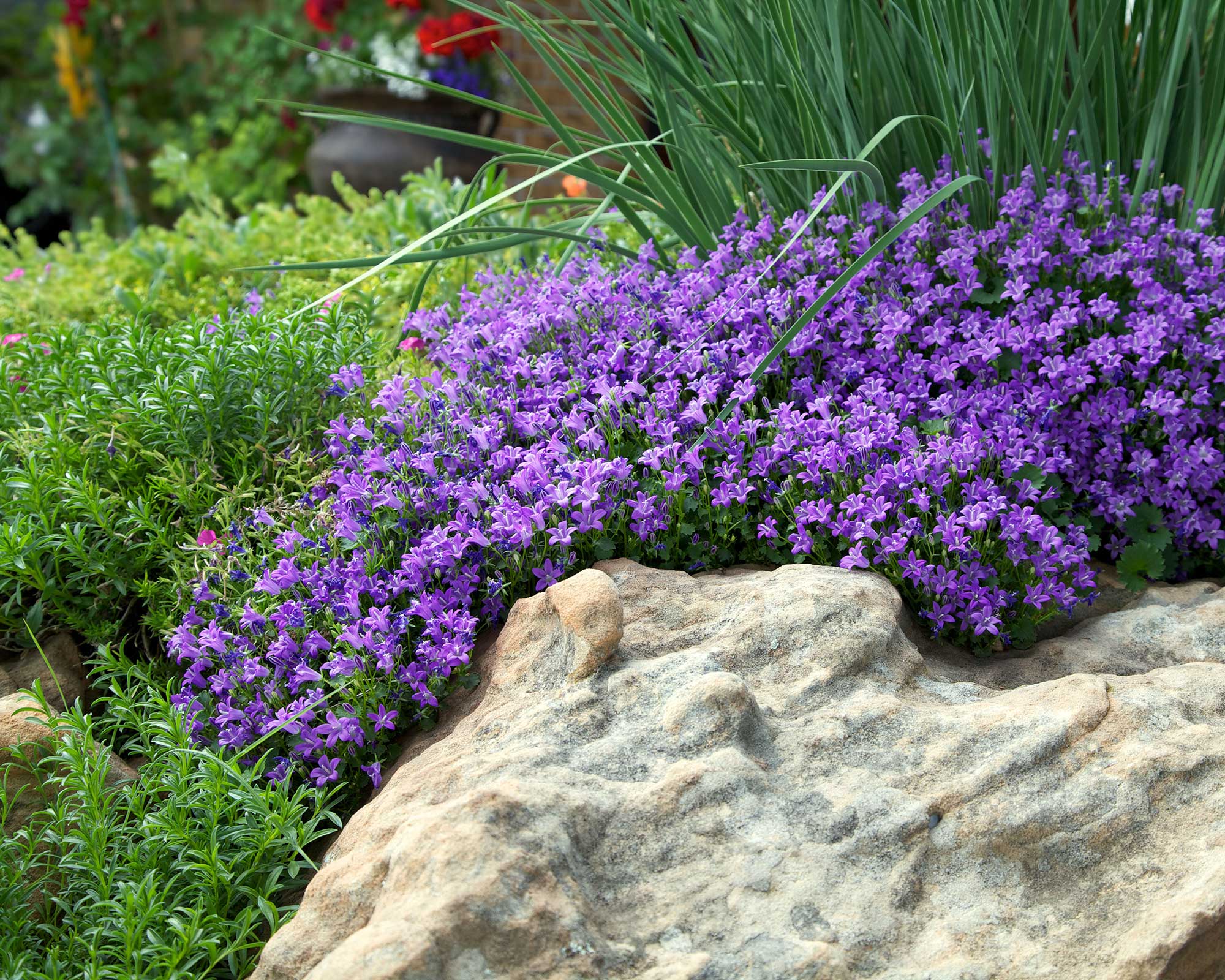
- Hardiness: USDA 3–9 (UK H4)
- Height: 12in (30cm)
- Spread: 36in (90cm)
- Best for: rockeries
This is undeniably one of the most popular mound-forming campanula varieties, easily finding a home in the smallest of wall crevices.
A Dalmatian bellflower that's true to its native habitat, it will thrive in most dry, stony areas with poor soil such as walls or as edging for pathways. They also make good plants for rockeries.
It's easy to grow, with evergreen foliage and is covered in lavender-purple flowers through the summer months. Quite rightly, it has an RHS AGM.
9. Campanula 'Medium Pink'
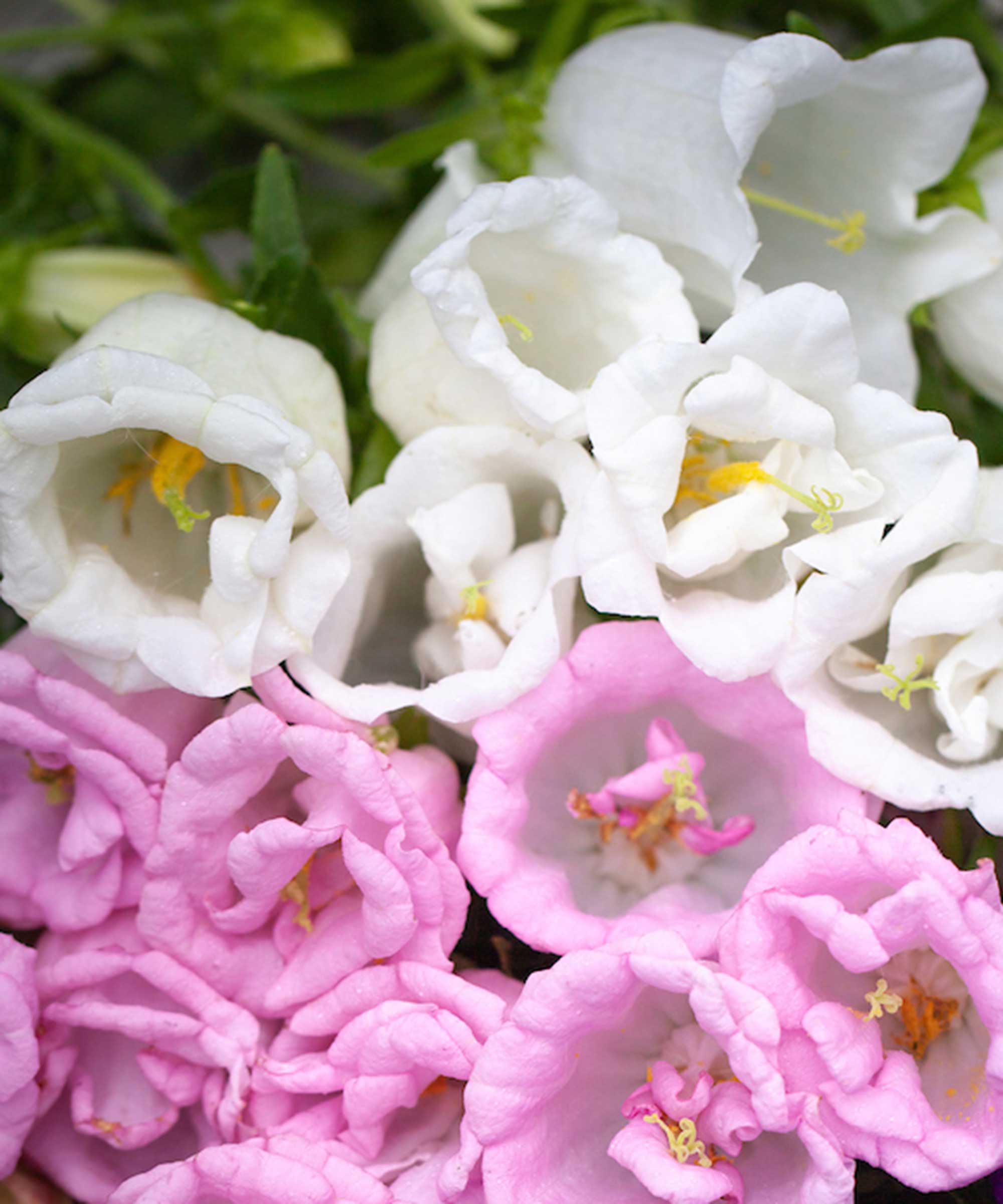
- Hardiness: USDA 3–9 (UK H4)
- Height: 30in (70cm)
- Spread: 18in (45cm)
- Best for: cut flowers
With its large, frilled, double flowers in pale candyfloss pink, this is a really delicious-looking campanula.
In bloom between late spring and mid-summer, it's a great perennial, with tall, upright stems, that suits sun and part-shade as long as the soil is relatively moist but well-drained.
It works well in both borders and pots, and makes lovely cutting garden flowers. A little more blousy than other campanulas, they are still attractive to pollinators. Try combining with phlox or, for contrast, with white valerian.
10. Campanula glomerata 'Caroline'
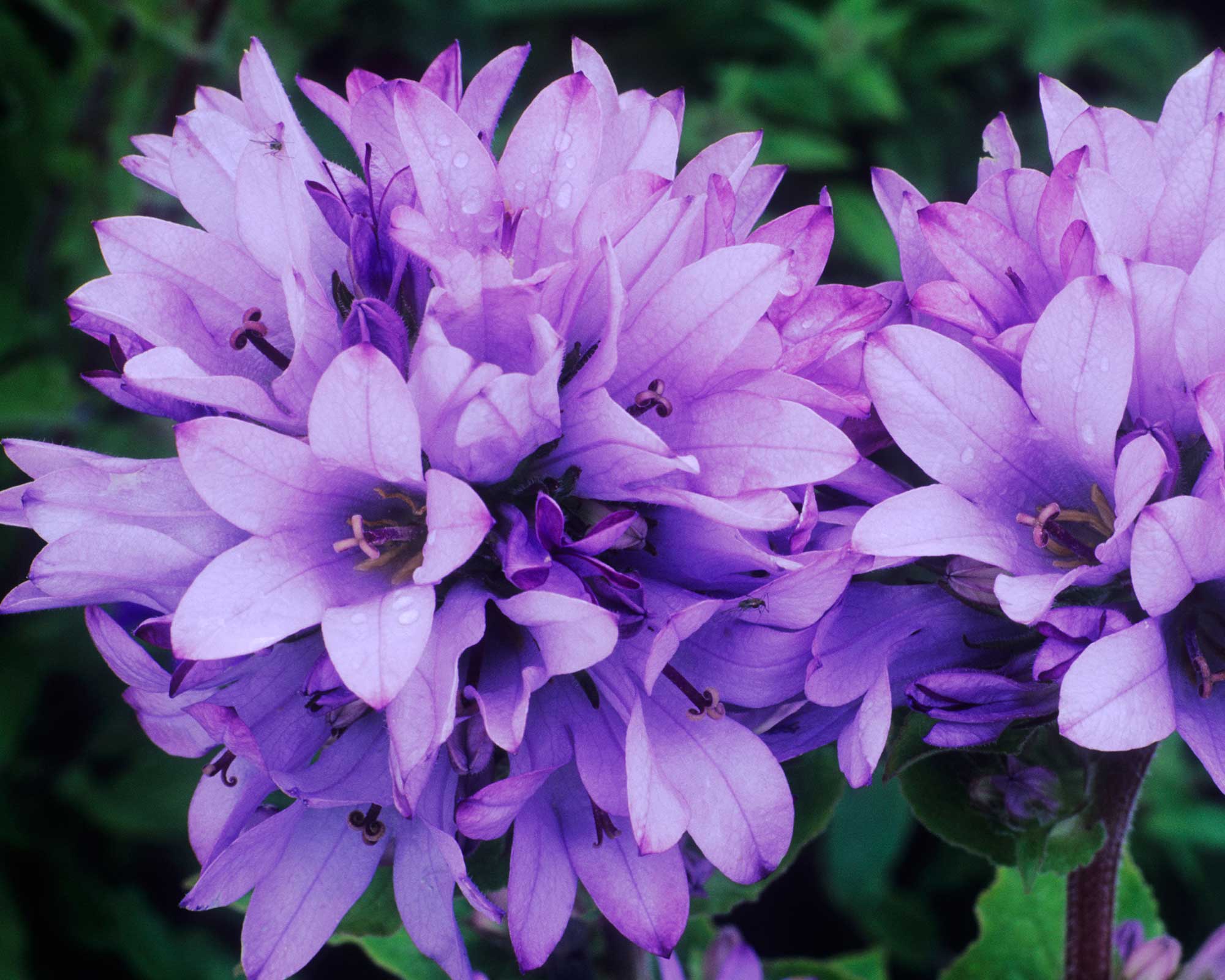
- Hardiness: USDA 3–8 (UK H4)
- Height: 24in (60cm)
- Spread: 36in (90cm)
- Best for: naturalizing
'Caroline' is a paler-flowered version than 'Superba', with densely packed clusters of lavender flowers borne on medium height, sturdy stems that are also very leafy.
Flowering early in the season, this is a spreader, and will naturalize in the right conditions of sun or semi-shade and moist but well-drained soil. It looks good mingling with persicarias and astrantias. Easy to grow, it also has an RHS AGM.
11. Campanula 'Sarastro'

- Hardiness: USDA 4–8 (UK H4)
- Height: 24in (60cm)
- Spread: 18in (45cm)
- Best for: purple flowers
This is a more bushy, medium-height hybrid with dark violet, deeply fluted bellflowers appearing through late summer.
Tolerant of part-shade or sun, it needs moist, fertile soil, so don't let it dry out. Good to grow in a mixed border, it contrasts well with Geranium phaeum 'Album' and lime-green Alchemilla mollis.
Alternatively, grow it in clumps alongside shrub types of roses for a romantic and dramatic accent.
12. Campanula punctata 'Milky Way'
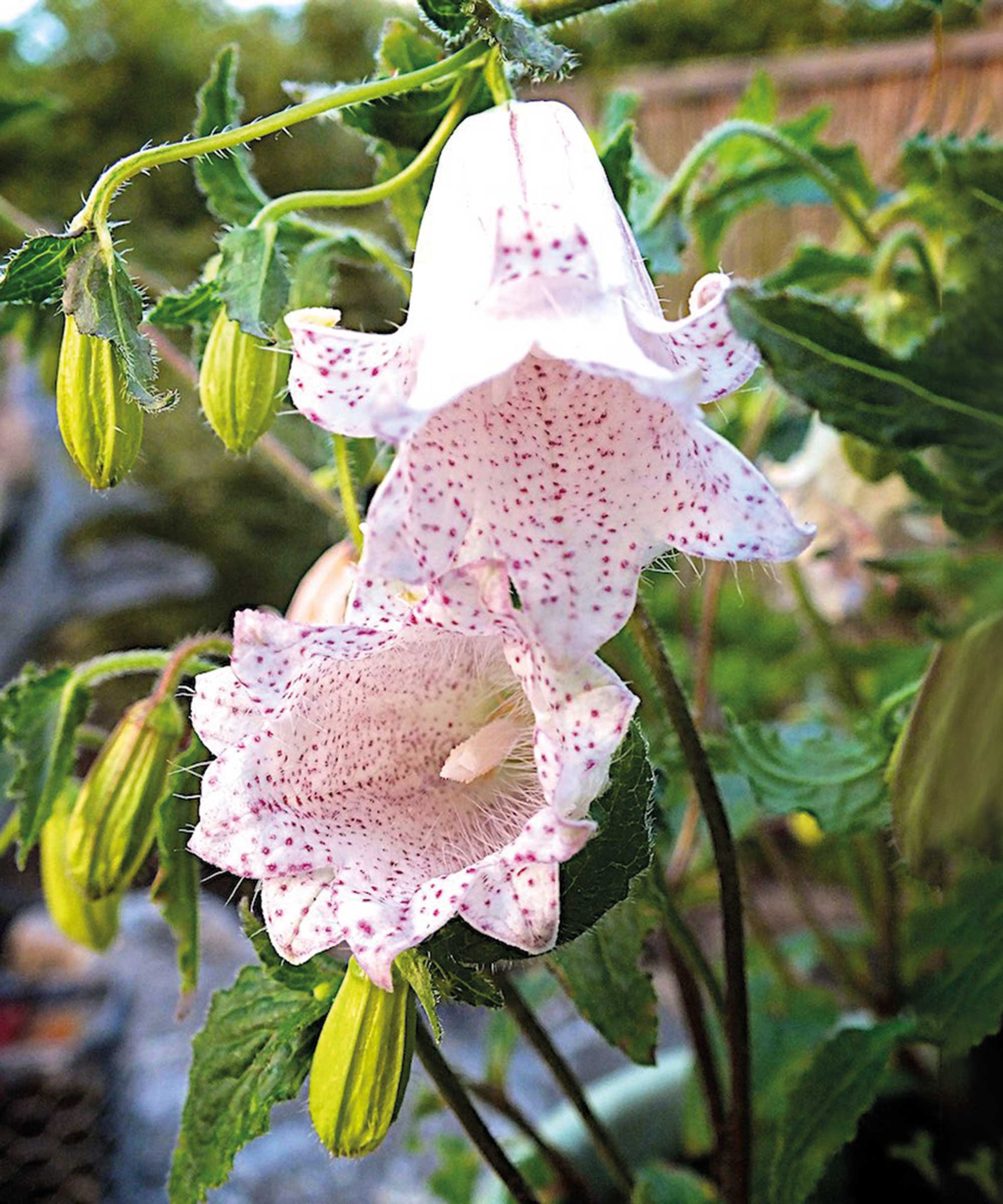
- Hardiness: USDA 4–8 (UK H7)
- Height: 20in (50cm)
- Spread: 20in (50cm)
- Best for: Cottage garden borders
This is a truly pretty campanula variety, with pale, almost-white, double bell flowers lightly freckled on the inside, carried on medium height, dark maroon stems above a clump of evergreen foliage.
Perfect for a sunny border, the blooms will keep coming from early to late summer, so it will look good complementing successionally-flowering plants like alliums, Lychnis coronaria, and poppies. It also makes a good cut flower for brightening up your interior scheme.
13. Campanula cochlearifolia 'Elizabeth Oliver'
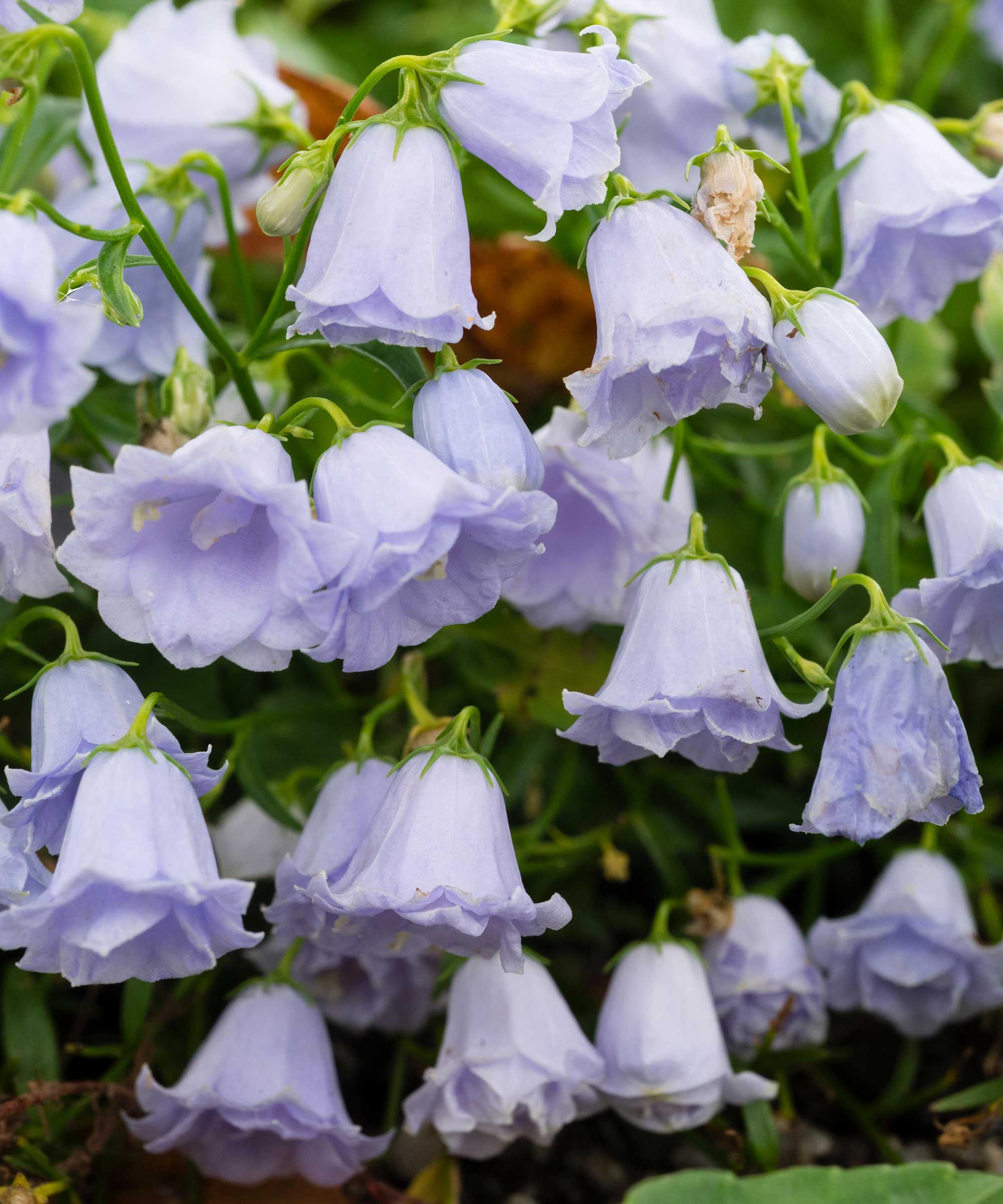
- Hardiness: USDA 3–9 (UK H4)
- Height: 6in (15cm)
- Spread: 18in (50cm)
- Best for: dry, sunny spots
With tiny, blue, bell-shaped flowers, it's not surprising that this delicate campanula is also known as 'fairies' thimbles'.
A rhizomatous plant, it's a good spreader. Finding ready-grown plants can be tricky but if you know how to grow flowers from seed, it's easy to add it to your garden.
A more unusual ground-hugger, it's good for rockeries, garden walls, and dry, sunny spots and has an RHS AGM to prove it's easy to grow.
14. Campanula takesimana 'Elizabeth'
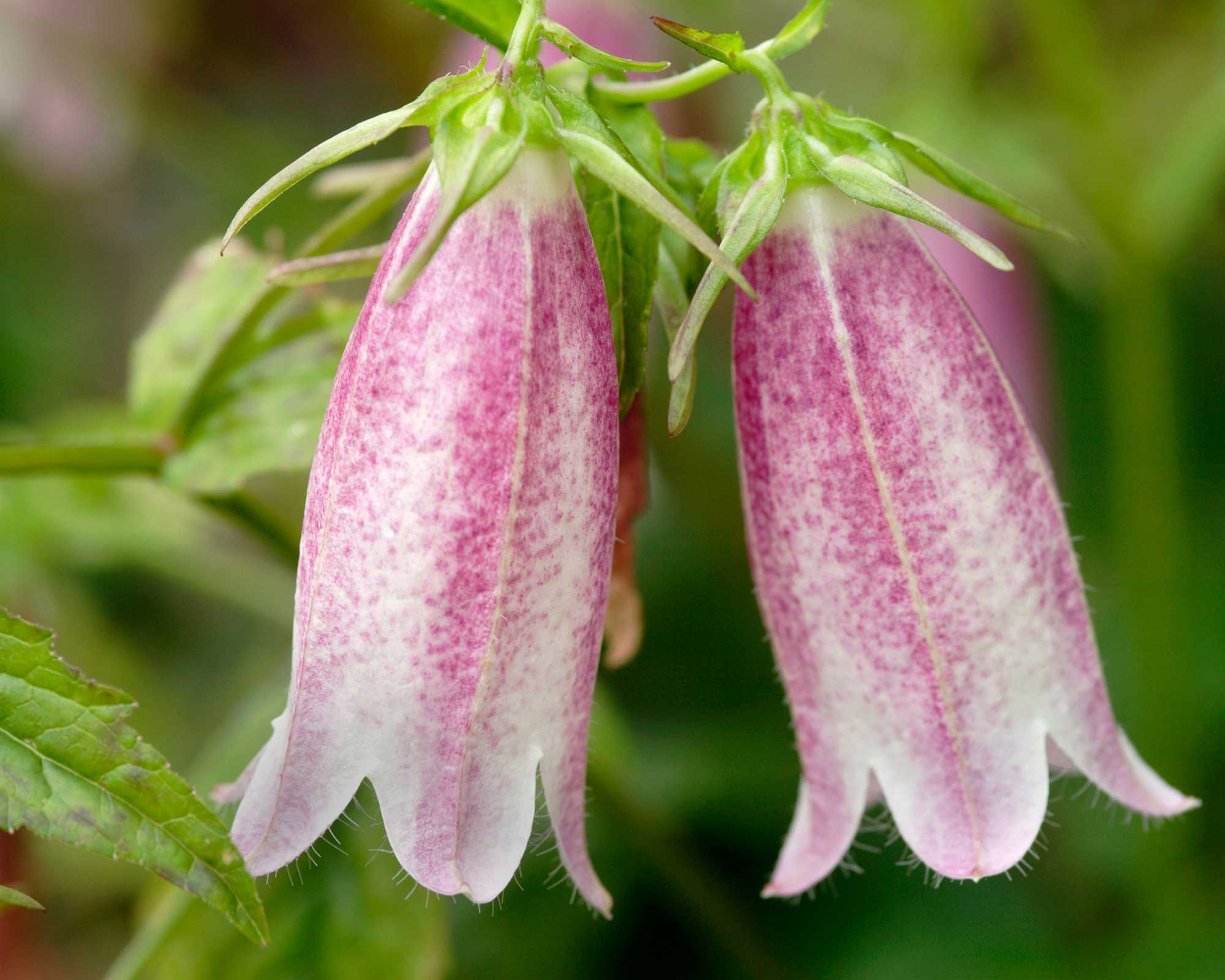
- Hardiness: USDA 4–7 (UK H4)
- Height: 18-24in (45-60cm)
- Spread: 36-48in (90-120cm)
- Best for: an exotic aesthetic
The Korean bellflower is one of the more exotic-looking campanula species and this cultivar is a great example, with gorgeous, long, dusky-pink flowers.
It grows in a low spreading mound with deep green heart-shaped leaves from which the upright stems emerge.
Flowering from mid-summer to early fall, it will tolerate a sunny spot.
15. Campanula pyramidalis
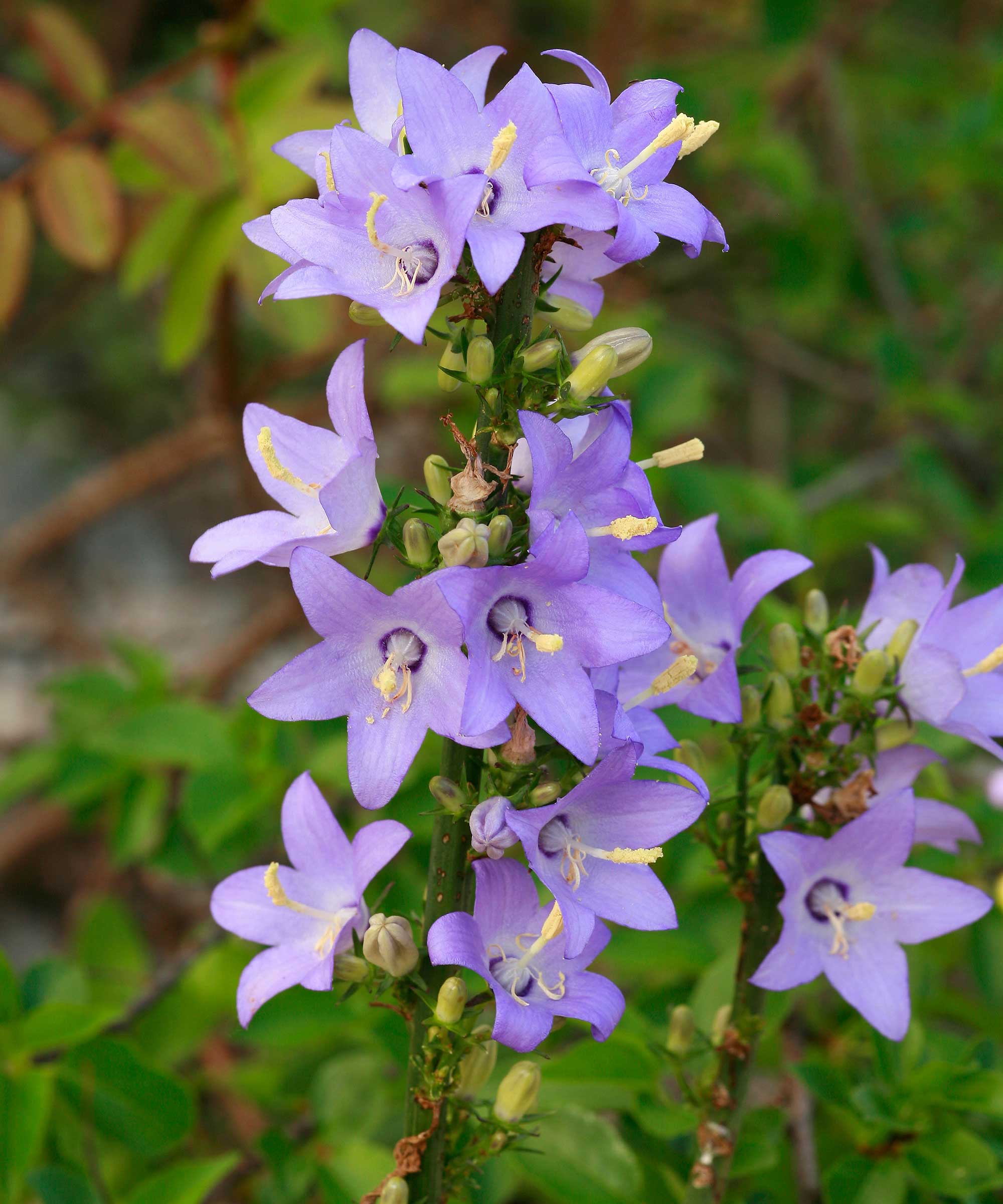
- Hardiness: USDA 5–9 (UK H4)
- Height: 78in (200cm)
- Spread: 24in (60cm)
- Best for: prolific flowers
Best grown from seed each year, this is a short-lived perennial or biennial species.
The tall, elegant stems carry loads of flowers from late spring to late summer, making a striking display. They are great as cut flowers, too.
Good for sun or semi-shade in moist but well-drained soil, try planting this variety in borders with delicate thalictrums for contrast. Or, go for a double campanula display with some of the low-growing types spilling over the edge of a garden planter.
What is the tallest type of campanula?
Some campanula varieties are compact, ground-hugging types that look like they have been poured over rocky terrain or walls.
But, you can also find taller varieties that carry flowers on erect stems and work well in mixed height borders with other tall perennials or naturalized in semi-shady woodland areas. Among the tallest is Campanula pyramidalis, coming in at a height of 6ft/2m.

In her years of gardening, Camilla has designed planting schemes for gardens large and small in and around London, written about plants and how to grow them, and worked on BBC gardening TV shows. She's passionate about sharing tips, advice and the joy of plants in this great community of gardeners that we’re all part of, and she now also works as a therapeutic horticulturist, teaching growing for wellbeing and mental health. Her unfulfilled ambition is to crack the ultimate dog-friendly garden - she thinks getting it right depends more on the dog than the plants...
